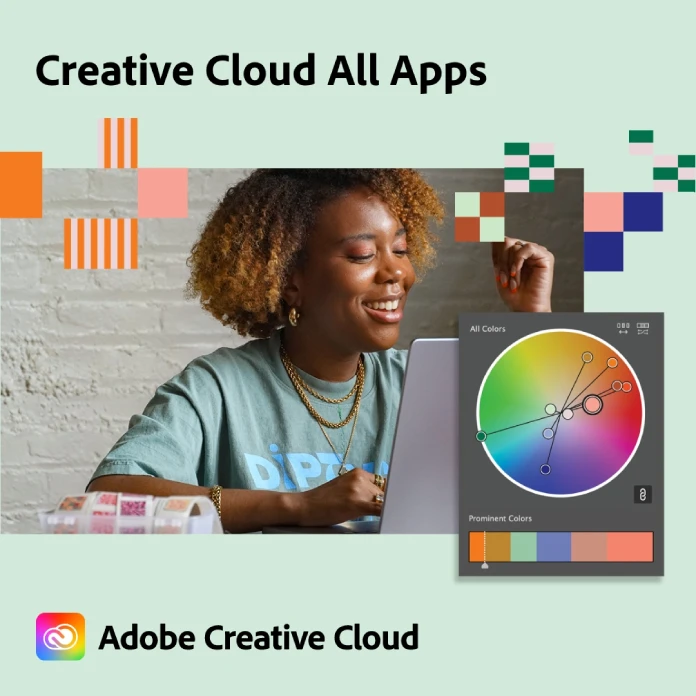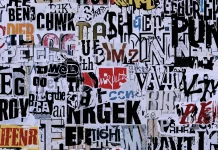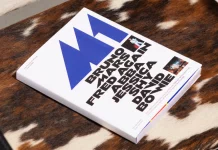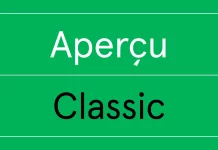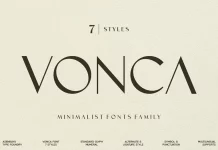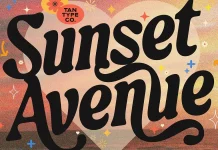This post contains affiliate links. We may earn a commission if you click on them and make a purchase. It’s at no extra cost to you and helps us run this site. Thanks for your support!
Great typography is not luck. It is language, logic, and pattern. That is why typeface classification matters more than ever. Search tools, design systems, and AI models all depend on clean categories. Clear labels speed creative decisions. They also make brand governance scalable. Most of all, they help readers. Good typeface classification gets the right voice onto the page, fast.
This guide explains what exists, why it exists, and how to use it well. It maps every major system in use. It also shows where those systems fail. You will find practical checklists and examples. You will find opinions, too, because classification is not just history. It is a tool for better work today.
Why is typeface classification timely?
Design libraries now hold thousands of styles. Teams must search, pair, and approve them in minutes. Variable fonts add range and nuance. However, they also widen the design space. Clear typeface classification cuts through that noise. It supports handoff, QA, and even accessibility. It also feeds AI. Models rank and retrieve types better when labels are consistent.
What typeface classification is (and is not)?
Typeface classification groups typefaces by shared traits. Those traits may be historical, visual, or technical. Some systems sort by serif form. Others sort by writing model. A few encode machine-readable numbers. No system is perfect. Every system reflects the culture and tasks of its time. Use them as maps, not laws.
How to use typeface classification in practice?
- Tag your library with one primary system. Then add one machine-readable layer.
- Store tags in font metadata and in your DAM.
- Teach your team two things: what each tag means, and when to break it.
- For brand work, tie approved tones to categories. For example, “news body = transitional serif; promo = geometric sans.”
- For UI, add width and x-height labels. Then search by those first.
These steps keep decisions fast and repeatable.
The major systems, fully and correctly explained
Below are the core classification systems designers still meet. Each section names every group in the system and explains it.
1) Thibaudeau (1921)
Purpose. First modern scheme for Latin type. It split serif styles by form, then added sans and scripts.
Groups.
- Elzévirs (Old-style). Low contrast, angled stress, bracketed serifs. Bookish tone.
- Didots (Modern). High contrast, vertical stress, hairline unbracketed serifs. Elegant and crisp.
- Égyptiennes (Slab serifs). Heavy, square serifs; display power; sturdy rhythm.
- Antiques (Sans serifs). No serifs; simple strokes; industrial clarity.
- Écritures (Scripts). Cursive, penlike forms for headings and notes.
- Fantaisies (Decorative). Novelty and ornament outside text norms.
Use today. Good for teaching roots. It is compact yet clear.
2) Vox–ATypI (1954; adopted 1962; later retired by ATypI)
Purpose. A richer historical map for Latin type. It still shapes how many schools teach type.
Classical group (serifs):
- Humanes. Venetian mood; inclined axis; soft contrast.
- Garaldes. Aldine/Garamond tradition; more contrast; horizontal e bar.
- Réales. Transitional; near-vertical axis; sharper detail.
- Didones. Modern; extreme contrast; thin, unbracketed serifs.
Modern group:
- Mécanes. Slab serifs, from bracketed Clarendons to square slabs.
- Lineales. All sans serifs. In practice, four subgroups help: Grotesque, Neo-grotesque, Geometric, Humanist.
Calligraphics group:
- Incises (Glyphic). Stone-cut feel; triangular serif hints.
- Scriptes. Joining, sloped, formal penmanship.
- Manuaires (Graphic/Manual). Drawn lettering for display.
Later additions and status. ATypI later added Blackletter and Non-Latin buckets. In 2021, ATypI de-adopted the system and began work on a broader, script-inclusive model. The system remains in wide educational use, yet its official status has changed.
Use today. Helpful for naming broad styles. Less helpful for variable, hybrid, or multiscript families.
3) British Standard BS 2961:1967
Purpose. A formal standard, adapted from Vox for British industry and education.
Serif classes:
- Humanist → Venetian traits.
- Garalde → Old-style book faces.
- Transitional → Baskerville lineage.
- Didone → Didot/Bodoni moderns.
- Slab-serif → Square or bracketed slabs.
Lineale (sans) classes:
- Grotesque → 19th-century roots; tighter apertures.
- Neo-grotesque → More regular; neutral tone.
- Geometric → Circles and straight lines; monoline.
- Humanist → Roman proportions; warm details.
Other classes:
- Glyphic → Incised capitals and tapered strokes.
- Script → Cursive, pen-like forms.
- Graphic → Display letterforms “drawn” rather than written; often where blackletter appears in examples.
Definitions and exemplar lists are given verbatim in the standard.
Use today. Still, a clear, concise taxonomy for catalogs and teaching.
4) DIN 16518 (1964, Germany)
Purpose. A precise industry standard with eleven main groups. It remains widely cited in German-language typography.
All eleven groups (German → English intent):
- Venezianische Renaissance-Antiqua → Venetian old-style.
- Französische Renaissance-Antiqua → Garalde old-style.
- Barock-Antiqua → Transitional.
- Klassizistische Antiqua → Didone modern.
- Serifenbetonte Linear-Antiqua → Slab serifs (Clarendon/Ionic and square slabs).
- Serifenlose Linear-Antiqua → Sans serifs (grotesk to humanist).
- Antiqua-Varianten → Display serifs outside text norms.
- Schriften nach fremder Vorlage → Revival or revivalist variants.
- Schreibschriften → Script faces (formal, casual, connecting).
- Gebrochene Schriften → Blackletter, with these subgroups: Textura, Rotunda, Schwabacher, Fraktur.
- Schriften fremder Systeme → Non-Latin scripts (e.g., Greek, Cyrillic, Hebrew, Arabic, Indic, CJK).
Use today. Excellent when you need blackletter broken out by subtype. Strong for book design contexts.
5) Aldo Novarese (1964)
Purpose. A designer’s scheme focused on how forms look and work in practice.
Ten families (Italian → meaning):
- Lapidari → Inscriptional capitals; carved tone.
- Mediovali → Medieval/old-style serifs.
- Veneziani → Venetian serifs.
- Transizionali → Transitional serifs.
- Bodoniani → Didone moderns.
- Ornati → Decorative/display.
- Egizi → Slab serifs.
- Lineari → Sans serifs (the full range).
- Scritti → Script faces.
- Fantasia → Experimental or novelty.
Use today. Friendly for designers who think in visual families, not only in history.
6) PANOSE (machine-readable)
Purpose. A numeric “fingerprint” for type matching and substitution. Useful to software, not just humans.
How it works. Ten digits describe key traits, in this order: Family kind, Serif style, Weight, Proportion, Contrast, Stroke variation, Arm style, Letterform, Midline, X-height. Each digit has enumerated values. Example: a Latin text serif with bracketed serifs, medium weight, normal width, and moderate contrast will encode those choices at fixed positions. Operating systems and apps can then match or substitute fonts more intelligently.
Use today. Add PANOSE to your metadata when possible. It improves automated font fallback and search.
7) OpenType OS/2 sFamilyClass (IBM/Microsoft)
Purpose. A compact class/subclass label inside every OpenType font. It aligns with ISO/IEC 9541 ideas.
What it covers. Serif families (old-style, transitional, modern, Clarendon, slab), sans serif families (grotesque, neo-grotesque, geometric, humanist), scripts, ornamentals, and more. Many fonts fill this field; many do not. Treat it as helpful metadata, not ground truth.
Use today. Surface this field in your DAM. It is a fast filter for broad buckets.
8) Platform categories designers meet
- Adobe Fonts. Filters by classification and language support; includes curated packs for display, sans, etc.
- Google Fonts. Public library with filters for serif, sans, slab, display, handwriting, and monospace, plus language filters and variable font support. These labels help non-experts find suitable styles quickly.
Use today. Map your internal tags to these platform labels to improve search parity.
Honest limits of typeface classification
No fixed scheme can cover the living field. Hybrid designs blur lines. Variable fonts let one family span several categories. Multiscript families complicate Latin-centric labels. ATypI’s retirement of the Vox–ATypI system is an honest signal here. The field needs classification that is script-aware, flexible, and measurable.
A better mental model: the Noordzij view
Gerrit Noordzij’s theory explains type by how strokes are made. It distinguishes translation contrast (broad-nib logic) from expansion contrast (pointed-pen logic), with rotation as a special case. The famous Noordzij cube shows weight, contrast amount, and contrast type as axes. This model helps designers reason about style and interpolation across families. It complements categorical systems. Use it to understand why a serif feels Venetian or why a sans reads warm.
Practical playbook: choosing and labeling type
For reading text.
- Start with humanist and garalde for long copy.
- Consider transitional when you want sparkle and precision.
- Use didone for contrast and chic tone, but test at body size.
For interface work.
- Favor humanist sans for clarity and warmth.
- Use neo-grotesque for neutrality and dense UI.
- Avoid geometric sans at small sizes unless x-height is generous.
For branding.
- Pick one serif and one sans family that share rhythm.
- Add a display face for campaigns.
- Gate novelty through Antiqua-Varianten/Ornati tags.
For archives and QA.
- Tag each font with: category (Vox or DIN), width, x-height, contrast, PANOSE, and sFamilyClass.
- Store examples showing correct contexts.
- Document “do not pair” notes for each brand.
Expert opinions that may help your team
- Keep two systems in parallel. A human-readable system (e.g., DIN or Vox-style) plus a machine-readable one (PANOSE/OS-2) covers both people and software.
- Teach the idea, not the label. Explain stress, contrast, serif shape, aperture, and rhythm. Teams then classify new releases on sight.
- Plan for ambiguity. Allow secondary tags like “serif → transitional; also didone influence.”
- Mind scripts beyond Latin. If you publish globally, adopt script-aware tags. DIN and ATypI’s move both point in that direction.
FAQ
Are Grotesque and Neo-grotesque different?
Yes. Grotesques keep 19th-century quirks and tighter apertures. Neo-grotesques are smoother and more regular. BS 2961 formalizes this split.
Where do blackletters live?
DIN places them in “Gebrochene Schriften,” with four subgroups: Textura, Rotunda, Schwabacher, Fraktur. In BS 2961, blackletter examples appear under Graphic.
Why did ATypI retire Vox–ATypI?
Because it centers Latin and struggles with global scripts and new forms. The group is working toward a broader model.
Do Google or Adobe follow one standard?
Not strictly. They expose designer-friendly categories and filters aligned with user needs, not formal standards.
Closing thought
Typeface classification is not a museum label. It is a design power tool. Use the historic maps to teach the eye. Use DIN for structure when you need it. Use PANOSE and OS/2 so software can help. Then use the Noordzij cube to reason about form. Mix them with care. Your typography will get faster, clearer, and more expressive. In our Fonts category, you’ll discover typefaces from every classification—and beyond.


